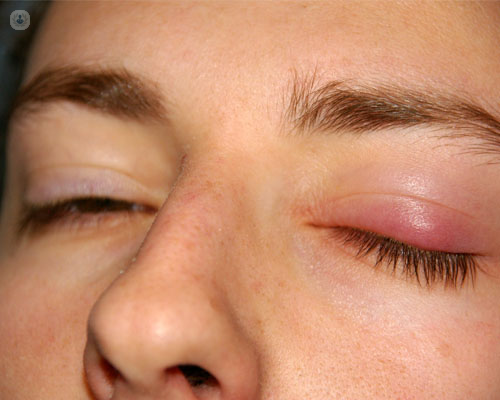Drooping eyelids, down upper eyelid
Written by:What is palpebral ptosis or blepharoptosis and why is it produced?
Palpebral Ptosis , commonly known as the drooping eyelid , is a descent of the upper eyelid causing the eye to be more covered than normal. This condition prevents the patient from opening the eyes normally, causing fatigue at the end of the day and making it difficult to see.
In the case of children, ptosis can result in a lazy eye, since it does not receive enough visual stimulation to develop normal vision.
There are several reasons why this pathology appears. The most frequent is due to age reasons but other less frequent ones are also given such as allergic reactions, muscular diseases, neurological diseases and traumatisms.
Also, there is possibility of suffering congenital ptosis, from birth, because the muscle fibers have not developed correctly and are replaced by fibrous tissue.
Can it be prevented?
No, it is not a pathology that appears by visual over-effort or that can be prevented with exercises.

What is the intervention?
It usually consists of strengthening the levator palpebrae muscle by means of a short shortening of the eyelid.. Only in cases of paralytic ptosis should the frontal suspension be used. The different techniques that exist to correct palpebral ptosis are:
- Previous way: it consists of reinforcing the levator muscle through an incision in the natural crease of the eyelid. This incision is the same as for a blepharoplasty, so it can be done at the same time. The scar is not visible.
- Transconjunctival or Putterman technique: the levator muscle is reinforced transconjunctivally. By not making a skin incision, there is no scar.
- Front Suspension: used when the previous techniques do not work. The eyelid is connected to the frontal muscle, so that the patient opens the eyes when raising the eyebrows by the frontal muscle.
Can children and adults be operated?
Yes, but in the case of children, if there is no risk of lazy eye it is preferable to wait. In the opposite case, the operation must be immediate.
What care should be followed after the operation?
The first days after the intervention it is advisable to apply cold and lubricate the eye with eye salve , as well as the application of an ointment on the scar to reduce bruising. In a maximum of two weeks the patient will be fully recovered.


